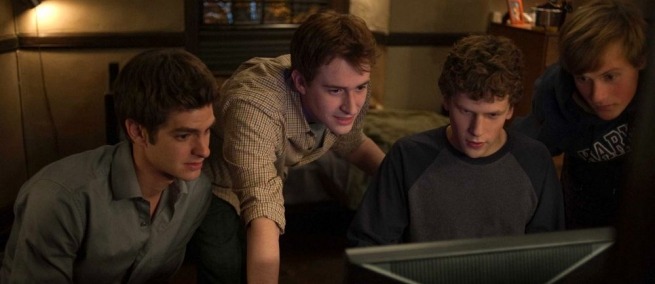
The accountability of humans and corporations to how information networks are used has been the subject of films from Sidney Lumet’s NETWORK to David Fincher’s THE SOCIAL NETWORK. Dr. Shaheen Shariff is an expert in the intersection of law, education, and technology at McGill University and a scholar at Stanford’s Center for Internet and Society. She runs the project “Define the Line” which engages people from law, arts, and the media to address sexual violence and cyberbullying. Science & Film spoke with Dr. Shariff by phone about communication technologies.
Science & Film: How do you think social media has impacted the tone of communications?
Shaheen Shariff: We’re in very interesting times right now. The Trump era, Brexit, and protectionism in Europe and parts of North America seemingly give indirect permission for people to start venting about what they feel in terms of hate. These sentiments have always been under the surface but that combined with social media–and I’m not blaming social media–has allowed these sentiments to spread. Some people think it is a good thing that this comes to the surface–that hate is expressed so that it can be debated. But the problem is that the distortion of truth is now so easy online. This whole notion of alternative facts or fake news has a deep connection to fostering fear and xenophobia.
S&F: What about what is happening with sexual assault victims and abusers being called out?
SS: The #metoo campaign and everything that has happened in that regard has been very good. That debate should have been aired a long time ago. Women are saying, we’re not taking it anymore. But again there are challenges. The entertainment industry and some organizations have fired people at the top of their careers to make a statement saying, we are going to support survivors on this. But if you’re in a university environment like I am, in a public institution, it is different. The callout has been effective in the public realm through social media. But if students call out professors on social media then the problem, at least under Canadian law and the way that university policy bears that out, is that the university then can’t do anything to issue the report as official. I know in universities this has put survivors at a disadvantage. The complaint is that universities aren’t moving fast enough. So it’s been positive in that universities are reviewing their sexual violence policies and processes and there is a lot of research being done, by myself included, in this area. But it can also backfire. For example, Betsy DeVos has been listening to some of the mothers of alleged student perpetrators and is now looking at reducing the impact of Title IX to honor due process. But Title IX was put in place to protect survivors.
We’re at a crossroads where all of these nuances need to be worked out. It’s unprecedented. The law hasn’t been able to keep up. Social media plays two roles: on the one hand, it is powerful in mobilizing a sea change in awareness. On the other hand, in the past–and it continues in some ways–it tacitly condones some of these institutional barriers.
S&F: What do you think about the extent to which corporations that operate social media platforms should be responsible for how they are used?
SS: It’s a huge challenge for these platforms. Under a precedent-setting U.S. case called Zeran versus America Online, Inc [1998] the law in the United States considers social media platforms to be only distributors. But U.S. law may have changed. News media and journalism fall under the legal category of publishers because there is a creative process in writing and delivering the news. Publishers are consciously developing and framing these stories. They can legally be held more accountable than social media intermediaries which are just platforms allowing communication, so in contrast do not have the same legal accountability.
Now, that said, I know that Facebook in Australia has a contract on the non-consensual distribution of intimate images. Facebook is asking people to send any intimate images that they would have sent to others so that Facebook can record this in their database, so that then if Facebook gets complaints about that image being distributed non-consensually, they can take it down. That’s a conscious decision that they are making to control content.

Dr. Shaheen Shariff is an Associate Professor in the Department of Integrated Studies in Education at McGill University. She is Co-Director of the University’s Institute for Human Development and Well-Being, and Associate Member of the McGill Faculty of Law and Centre for Human Rights and Legal Pluralism and an Affiliate Scholar at Stanford University’s Center for Internet and Society. She is author of two books on cyberbullying published by Cambridge University Press.
TOPICS